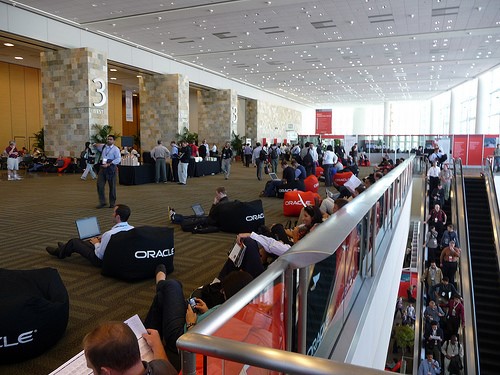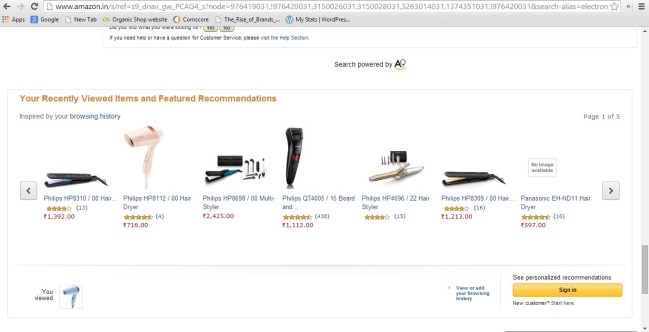Marketing automation is the use of technology, data mining and platforms for consumer analysis to customize marketing campaigns and marketing communication to extremely differentiated and smaller groups of potential or existing customers.
If you are a B2C marketer, you probably are well aware of the transition in the way marketers interact with customers through different online platforms from the way we used to earlier communicate with the customer (or atleast assume that we are). Automation in marketing has simplified the jobs of marketers who know how to use data from different forms and platforms where your customer probably went online.
Let’s Talk Business
KISSmetrics uses a formula to calculate dropout rates from e-commerce websites. Shopping cart abandonment rate equals to a ratio of total website visitors who start check out process with the total number of ‘add to cart’ clicks. As close to 88% customers today do this and turn to a better deal out there at the other competing website.
You are left with nothing right? Wrong. You are left with the data. You know that this customer left the deal while shopping for a particular product at your website. Hence, your next newsletter to this particular customer, needs a special mention of the product and the discounts on this and related products on your website. Customization is about identifying where your consumer is, what is he possibly upto and what exactly do you have to do to get him reach you or vice versa. Interestingly, one particular company experienced a 244% increase in their shopping cart recovery rate after the introduction of a promotional discount in re-marketing e-mails.
Personalized websites
Personalized websites are another way to enhance online customer experience. Features and widgets showing previously viewed search results, showing similar products to what the consumer might have browsed through earlier basis the search history so on and so forth are common nowadays. Amazon does that extensively. However, I have heard from a lot of my colleagues talking as consumers that they, most of the times, feel as if this task is pretty much like stalking, as if invasion of privacy which somehow disturbs the consumer if overdone. I personally remember a recent case where, I browsed through a specific set of products on a popular e-commerce portal for some research purposes and it kept stalking me, on Google, search, G-mail, Facebook, including news websites till the time I did not remove it manually thanks to the option of removing the ad from Facebook Not just this, I removed all the other ads that appeared there along with this particular ad as I got a little frustrated of watching the same ad over and over again.
On the other hand, there are websites that wish me Happy Birthday, even more, remind me of the birthdays of five of my close friends to make my task easier. This makes more sense to me. The idea is not to stalk the person wherever he goes, but assist him, help him live a much simple life and it pays off well (monetarily as well).
Since the time Google separated the three tabs in G-mail, it became even more imperative for marketers to think of personalized e-mails and I have advocated that quite a lot of times in my arguments with brand custodians.
Event-triggered marketing, for say, informing about upcoming promotions based on previously browsed products, personalized merchandise gifts to make it special on birthdays, personalized inbound and outbound messages and content to reach the highest level of customer satisfaction and trust is what is crucial in today’s world.
Using predictive analysis can be exciting for us. Marketers can know their customers better, their characteristics and behaviors through the richness of data of each individual customer and the precision of mathematical modeling. Companies can develop best practices and adopt a host of competencies through data-driven customer insights. Alongside, sentiment analysis and text analysis is something we get from social platforms to further mine the data about customers that are broken into very small segments. This is an incredible revolution. As a marketer, this is the most amazing thing that could happen to my organization, but personally, as a consumer, this amount of invasion into my social and online life that I spend almost throughout the day is a matter of concern since this is something which might handle my information in a completely wrong direction and eventually land up with something that might irritate me in future.
Re-marketing- a part of automation
Re-marketing is an opportunity for marketers to present their products or services to a set of audience who have already seen your product, gone through your website and browsed through different categories and most importantly, you have got a track of it. Amazon has raised our standards of personalization as far as the overall shopping experience is concerned. This ultimately boosts click-through rate and brings companies closer to conversion to as higher than 450%
However, striking the right chord between stalking and intelligent re-marketing is yet to be achieved by marketers today, atleast in India. Therefore, clarity in terms of what you want your data to achieve is important for marketers today. Automation is a great facilitator of targeted marketing efforts but it cannot encompass human endeavors. My conclusion-human intelligence has to be in tandem with what you call the technology and data revolution.
Your comments and opinions are welcomed to help demystify the concept of marketing automation and the integration of technology and data with marketing and potential business concepts through product innovations.


